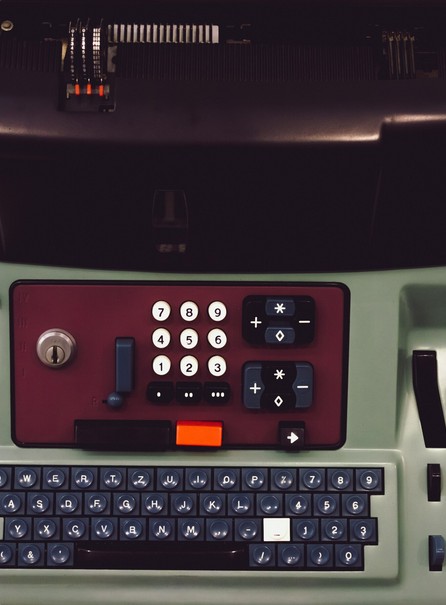Boost Performance
Supercharge your results with cutting-edge techniques. Achieve more in less time—dominate your goals effortlessly.
Maximize Success
Unleash your potential with proven methods. Elevate productivity, crush targets, and outperform competitors.
Drive Results
Ignite growth with high-impact strategies. Win big, scale fast, and leave limits behind.
The Fascinating and Tumultuous History of Machine Translation: From Babel to AI Dominance
Introduction: The Quest to Conquer Language Barriers.
The history of machine translation is a riveting saga of human ingenuity, technological leaps, and occasional spectacular failures. From early mechanical dictionaries to today’s AI-powered neural networks, the journey has been nothing short of extraordinary. But how did we transition from rudimentary word-for-word substitutions to sophisticated, context-aware translations that rival human linguists?
This comprehensive deep dive will unravel the evolution of machine translation, exploring its origins, key breakthroughs, and the seismic shifts that transformed it into an indispensable global tool. By the end, you’ll understand not just where machine translation has been—but where it’s headed next.
The Dawn of Machine Translation – Early Concepts and Mechanical Dreams
The Pre-Digital Era: Philosophical Foundations (1600s–1940s)
Long before computers existed, visionaries dreamed of mechanizing language. In the 17th century, philosophers like René Descartes and Gottfried Wilhelm Leibniz proposed universal symbolic languages to bridge communication gaps. However, these ideas remained theoretical until the 20th century, when technological advancements made automation feasible.
The First Mechanical Translators (1930s–1950s)
The earliest proto-machine translation systems emerged in the 1930s, with devices like the “Mechanical Brain”—a rudimentary dictionary that matched words between languages. However, these systems lacked grammatical understanding, producing disjointed and often nonsensical outputs.
The Georgetown-IBM Experiment (1954) – A Watershed Moment
The first true machine translation (MT) system debuted in 1954, when IBM and Georgetown University stunned the world by automatically translating 60 Russian sentences into English using a rule-based algorithm. Though primitive by today’s standards, this experiment proved that automated translation was possible, sparking a wave of research funding.
«The Georgetown-IBM experiment wasn’t just a success; it was the spark that ignited the entire field of computational linguistics.»
The Rollercoaster Ride of Machine Translation (1960s–1980s)
The ALPAC Report (1966) – A Devastating Setback
Just as optimism peaked, the Automatic Language Processing Advisory Committee (ALPAC) delivered a crushing blow. Their 1966 report concluded that MT was too slow, expensive, and inaccurate compared to human translators. As a result, U.S. government funding dried up, stalling progress for nearly a decade.
Rule-Based Systems – The Slow but Steady Approach (1970s–1990s)
Undeterred, researchers pivoted to rule-based machine translation (RBMT), which relied on linguistic rules and bilingual dictionaries. Systems like SYSTRAN (later used by early Google Translate) dominated the field, but their rigid structures led to awkward, unnatural translations.
The Rise of Commercial MT – METEO and Beyond
One of the first real-world successes of RBMT was METEO, a system deployed in 1976 to translate Canadian weather reports between English and French. Despite its limitations, METEO proved that machine translation had practical applications.
Dominate Your Market



Leverage unbeatable strategies to lead your field. Secure loyalty, demand attention, and rule your niche.

The Digital Revolution – Statistical and Neural Breakthroughs
The Rise of Statistical Machine Translation (1990s–2000s)
The 1990s saw a paradigm shift with statistical machine translation (SMT), which abandoned rigid rules in favor of probability models derived from vast bilingual text corpora. IBM’s Candide system (1990) and later Google Translate (2006) leveraged this approach, delivering far more fluid and natural translations.
The Neural Machine Translation Revolution (2014–Present)
The biggest leap came with neural machine translation (NMT), which uses deep learning to process entire sentences contextually. Google’s Transformer model (2017) revolutionized the field, enabling near-human accuracy in many languages. Unlike SMT, NMT understands idioms, tone, and even cultural nuances, making it the gold standard today.
«Neural networks didn’t just improve translation—they redefined what machines could do with language.»
The Future of Machine Translation – What Lies Ahead?
Real-Time Speech Translation – Breaking the Final Barriers
With tools like Google’s Interpreter Mode and AI-powered earbuds, real-time speech translation is now a reality. The next frontier? Zero-lag, accent-adaptive multilingual conversations that feel completely natural.
Ethical and Cultural Challenges – The Unseen Hurdles
Despite advancements, MT still grapples with bias, context errors, and cultural sensitivities. For example, early AI models often misgendered pronouns or failed to capture sarcasm. Future systems must integrate ethical AI frameworks to avoid perpetuating stereotypes.
The Role of Quantum Computing – A Game-Changer?
Some researchers believe quantum computing could exponentially accelerate translation models, enabling instantaneous, ultra-precise multilingual communication. While still speculative, this could be the next revolution in the field.
Laser-focused plans for maximum impact.
Eliminate guesswork with actionable steps. Hit targets faster, smarter, and with unstoppable momentum—success guaranteed.
Conclusion – The Unstoppable March of Machine Translation
From clunky rule-based systems to sophisticated neural networks, the history of machine translation is a testament to human perseverance. As AI continues evolving, one thing is certain: language barriers are crumbling faster than ever before.
Final Thoughts
- Key Takeaway: Machine translation has come light-years since its inception.
- Future Outlook: Expect even more seamless, intuitive, and culturally aware translations in the coming years.
Ready to Win Big?
Start your journey to unstoppable success.
Don’t wait—transform your results today! Contact us now for expert guidance and explosive growth. Your future starts here!






